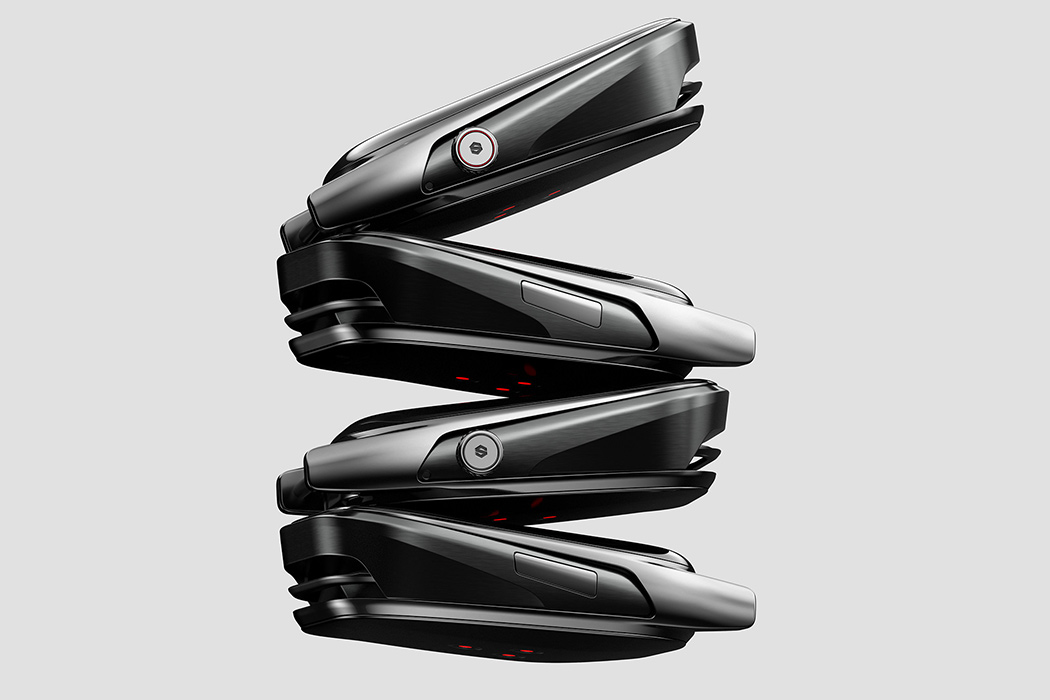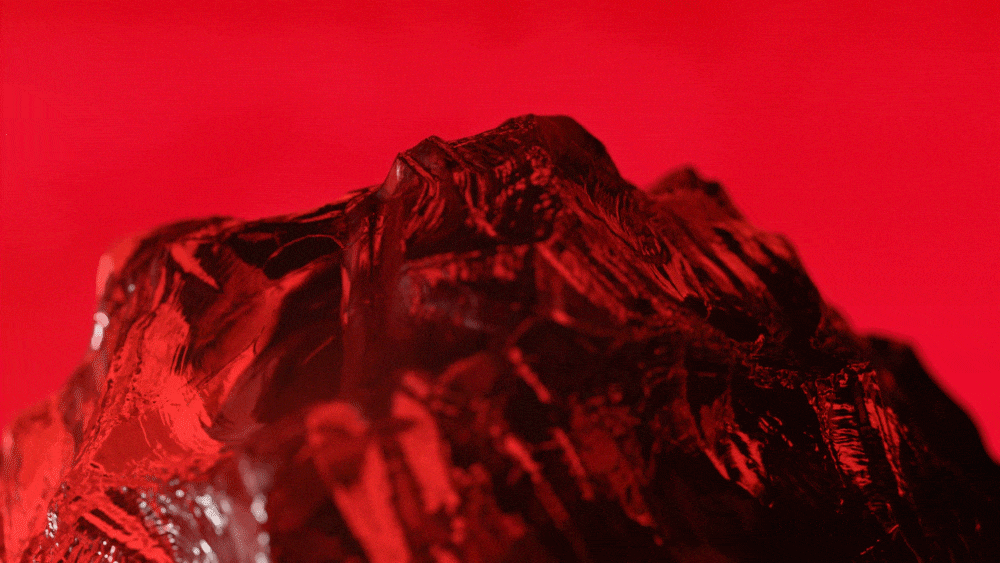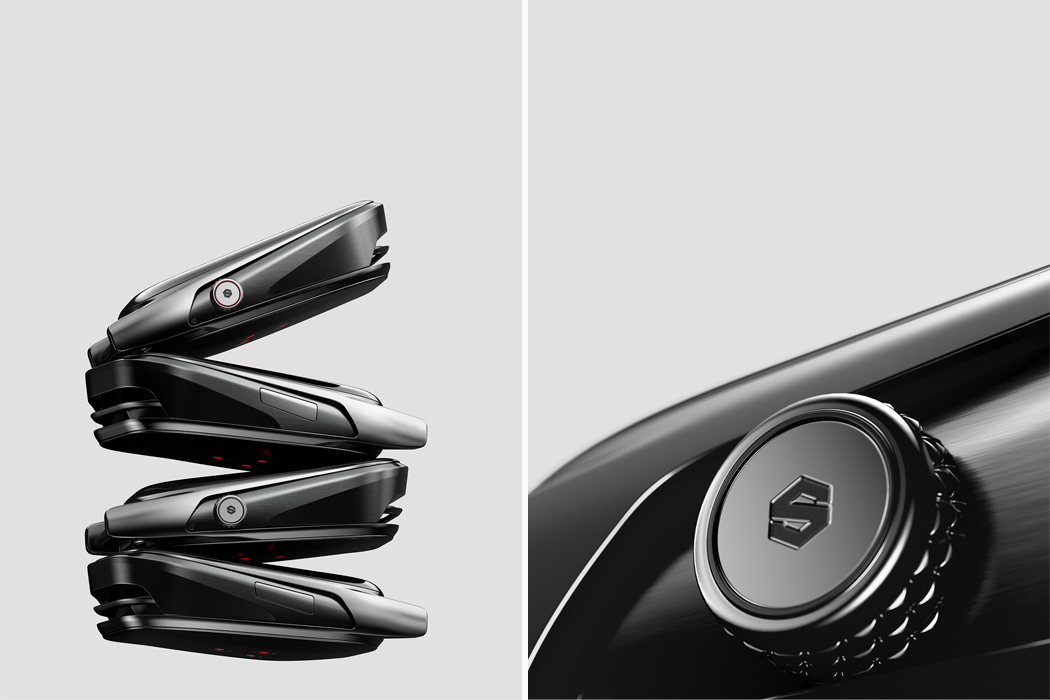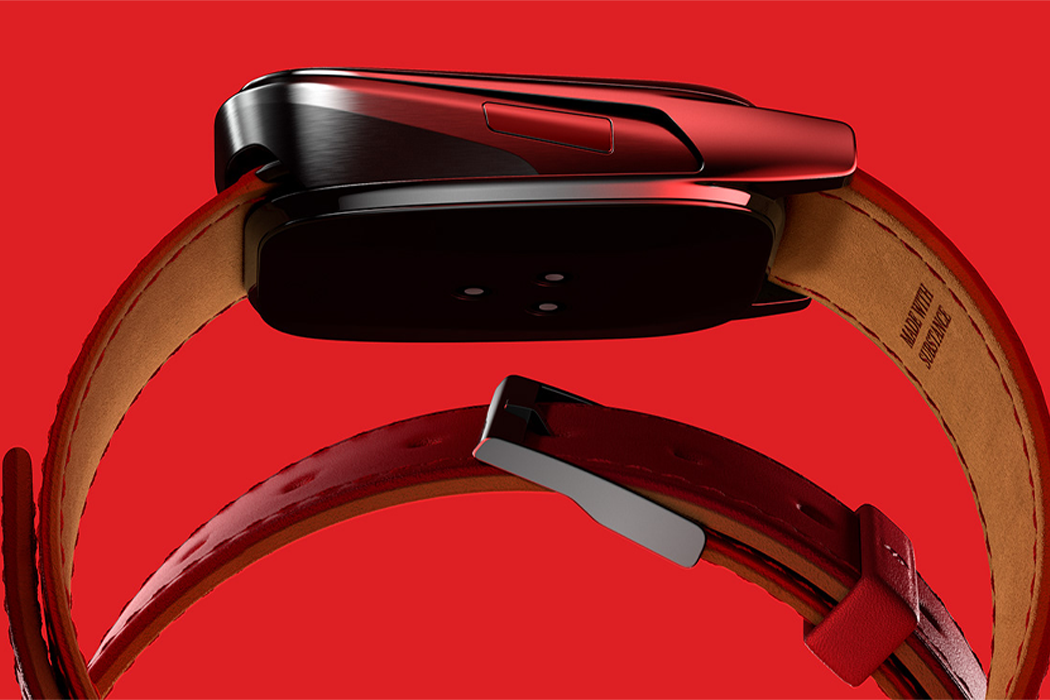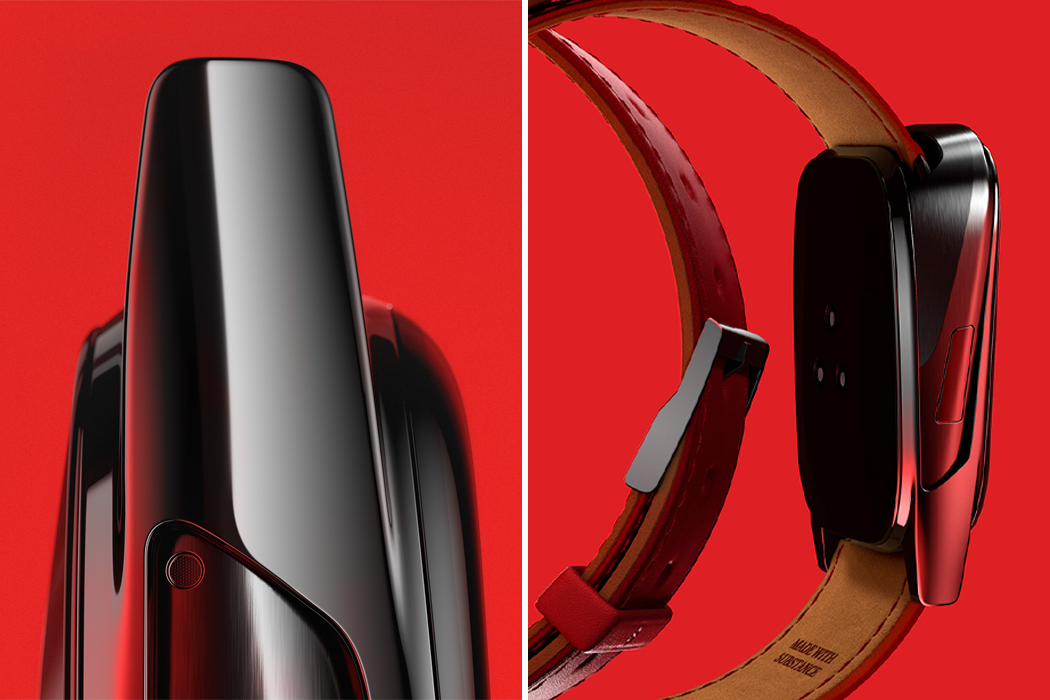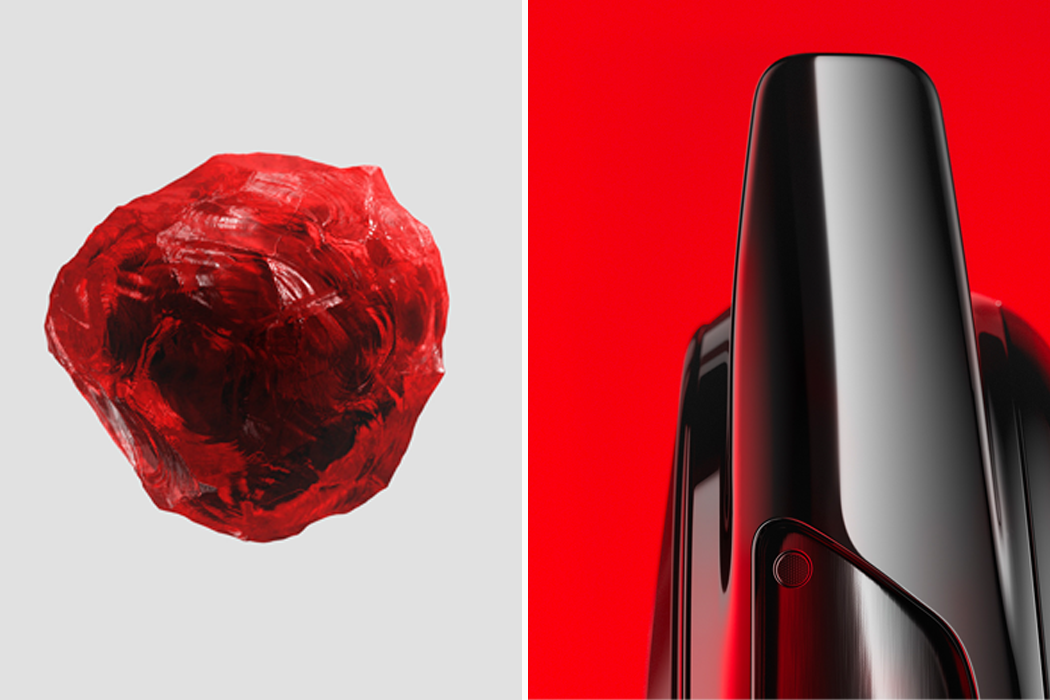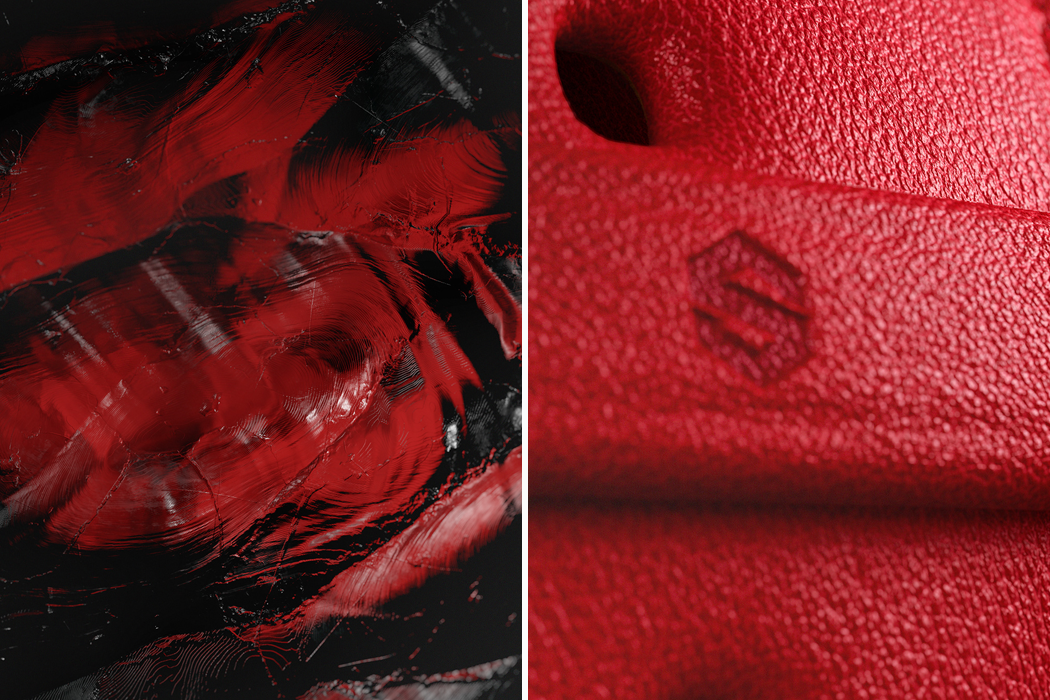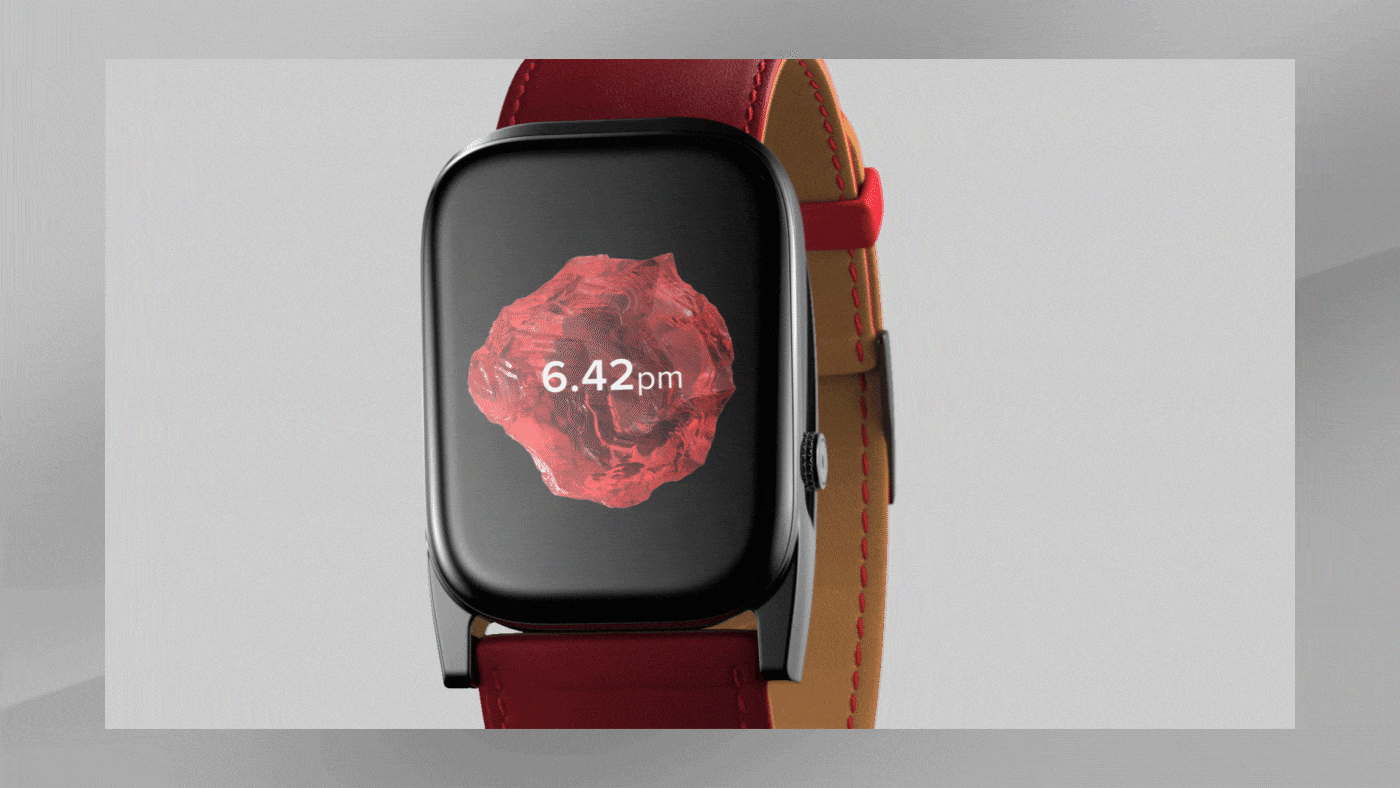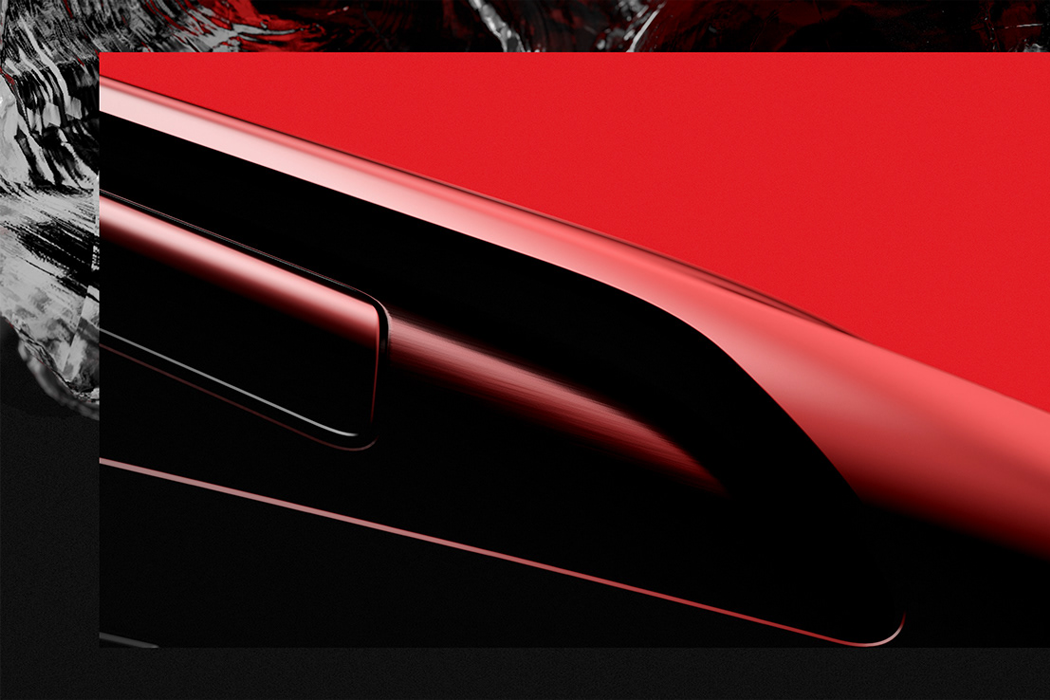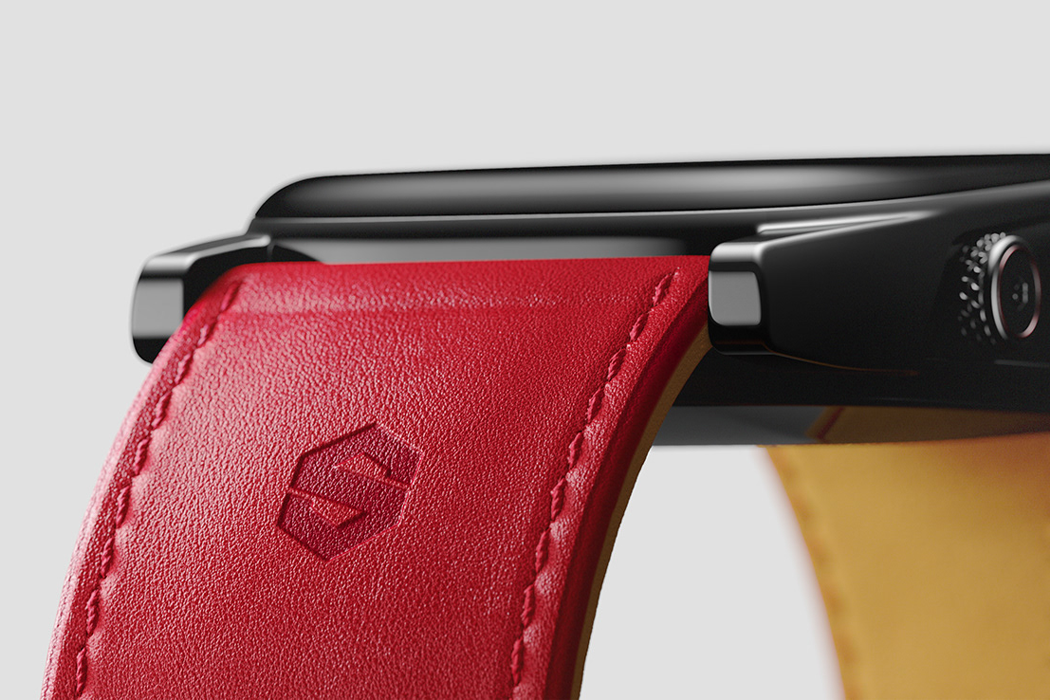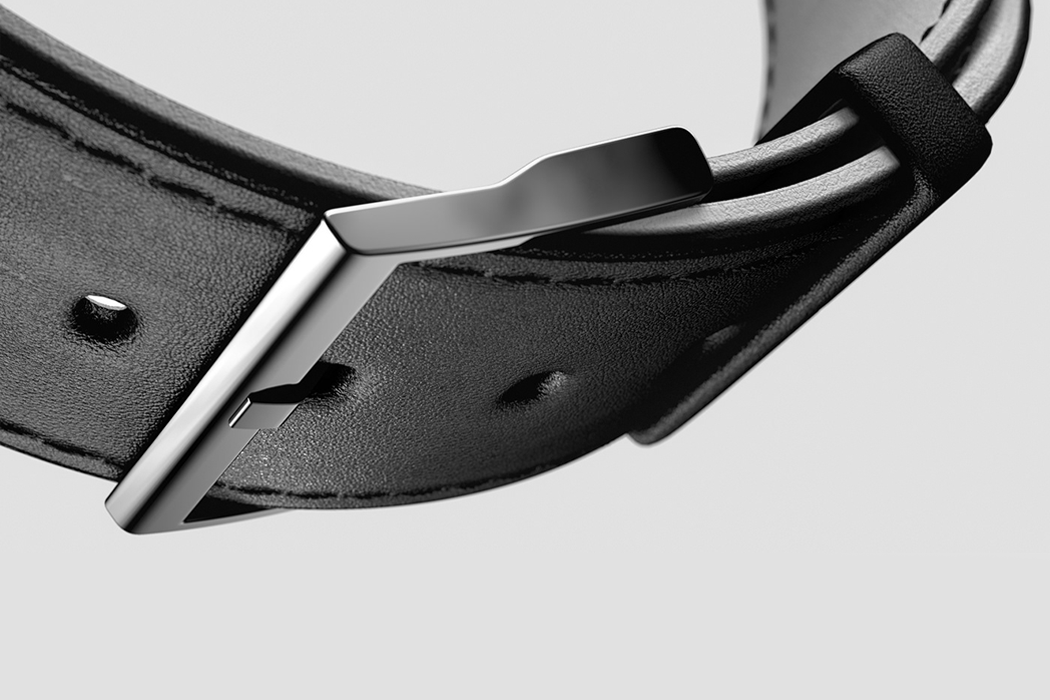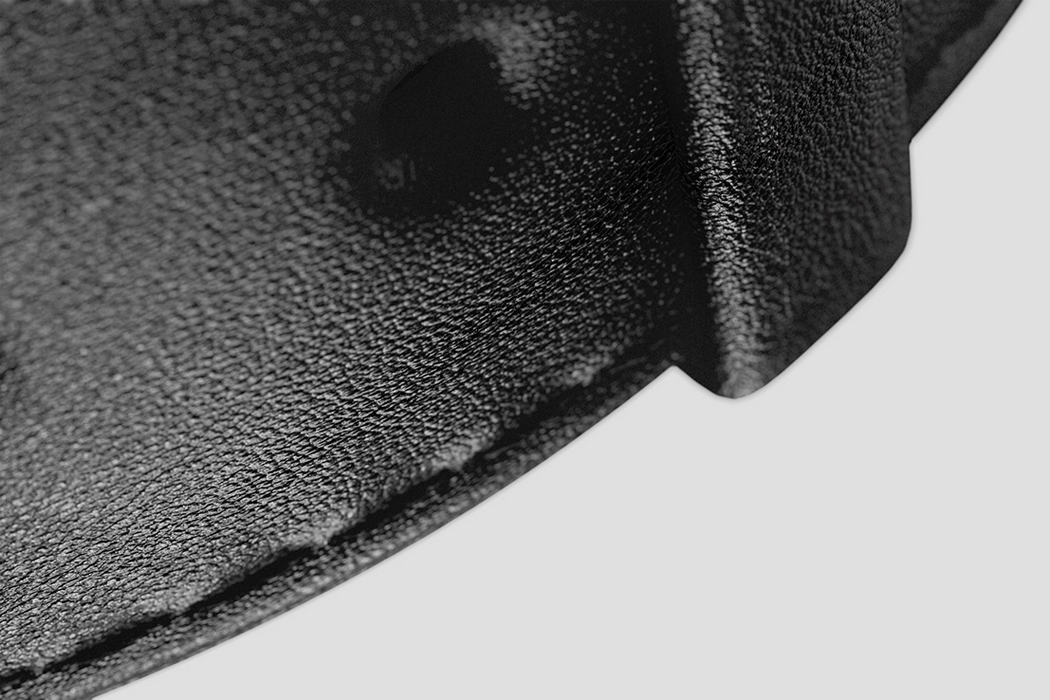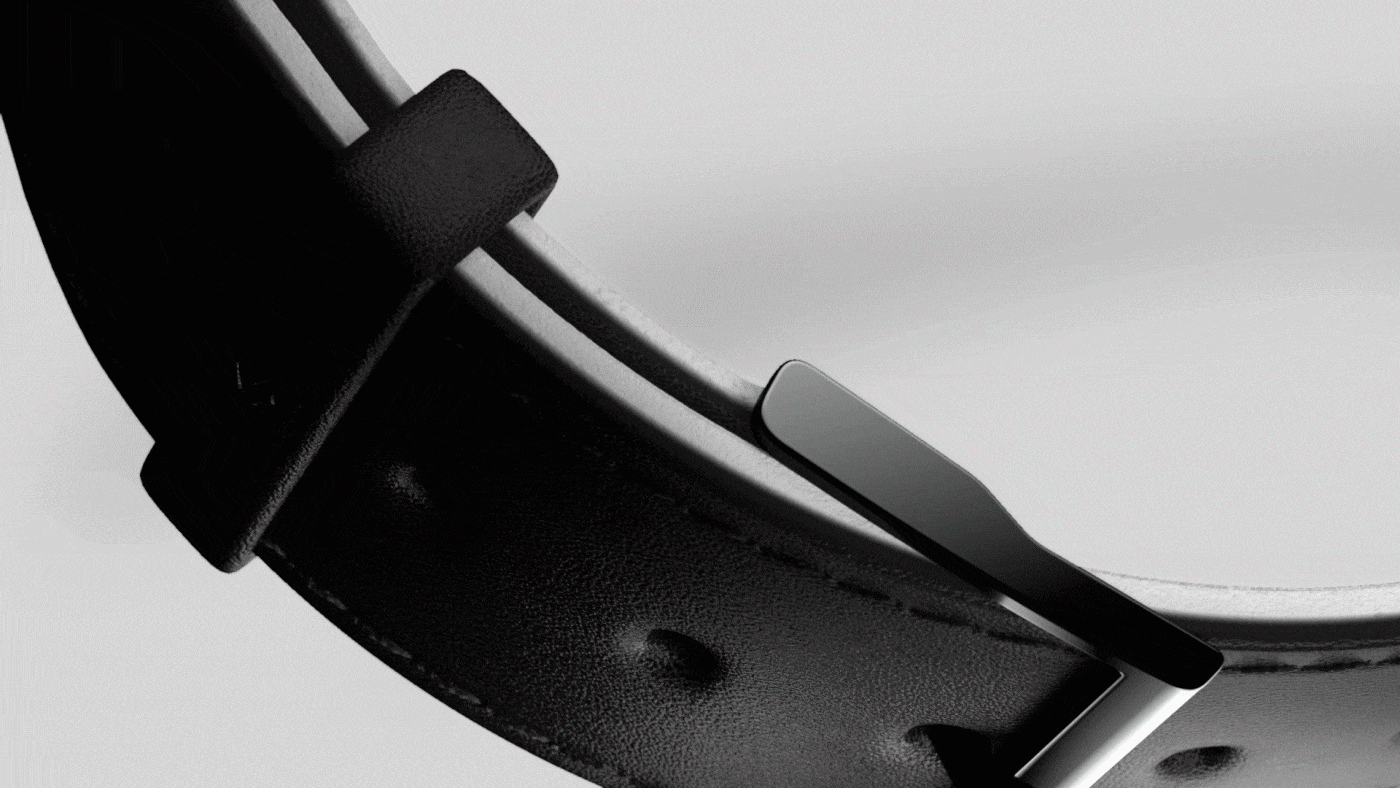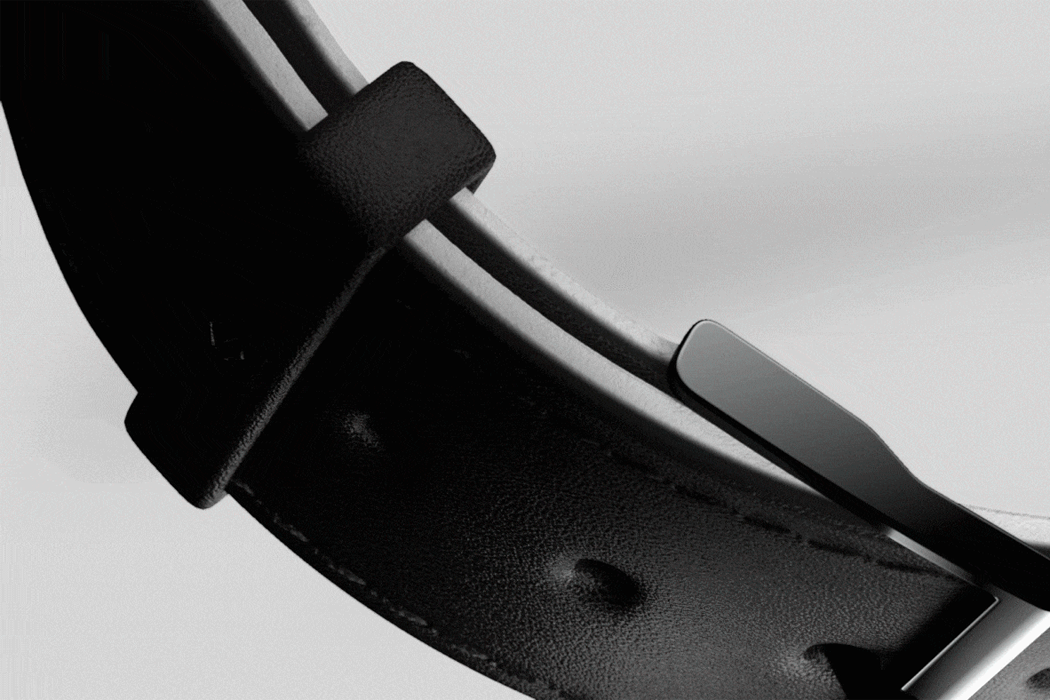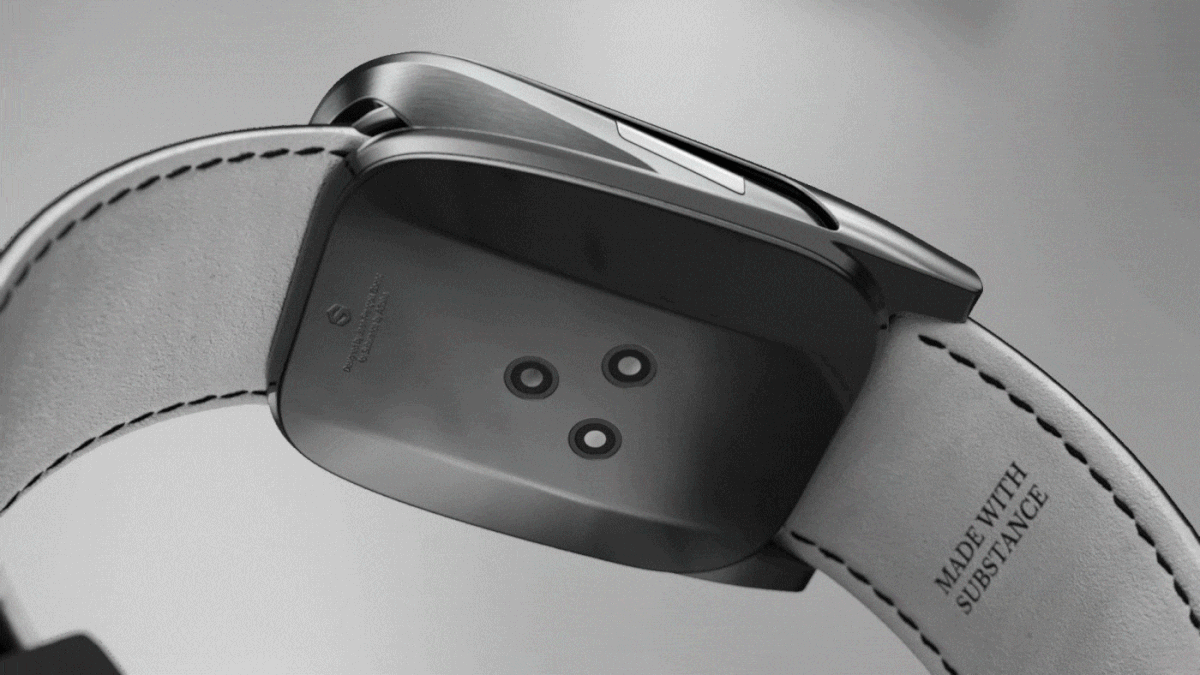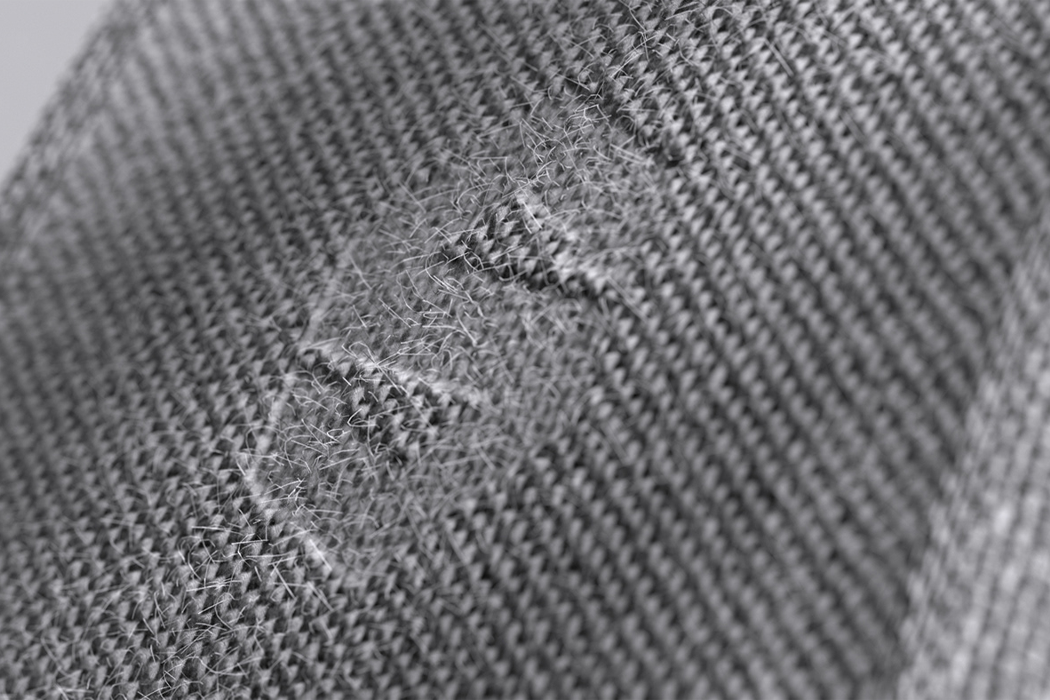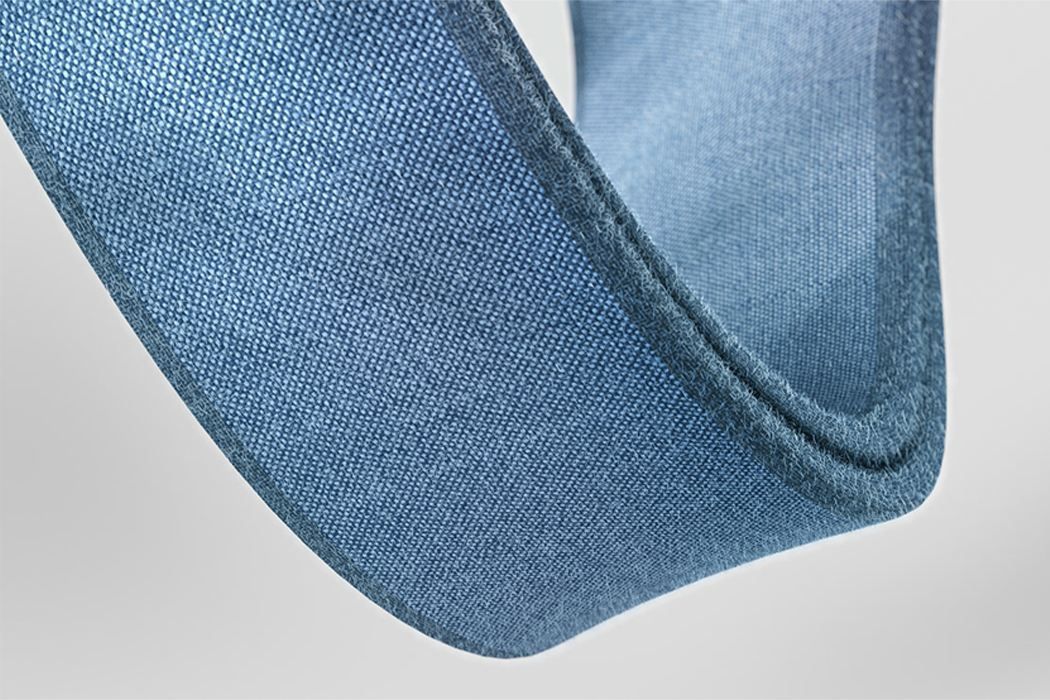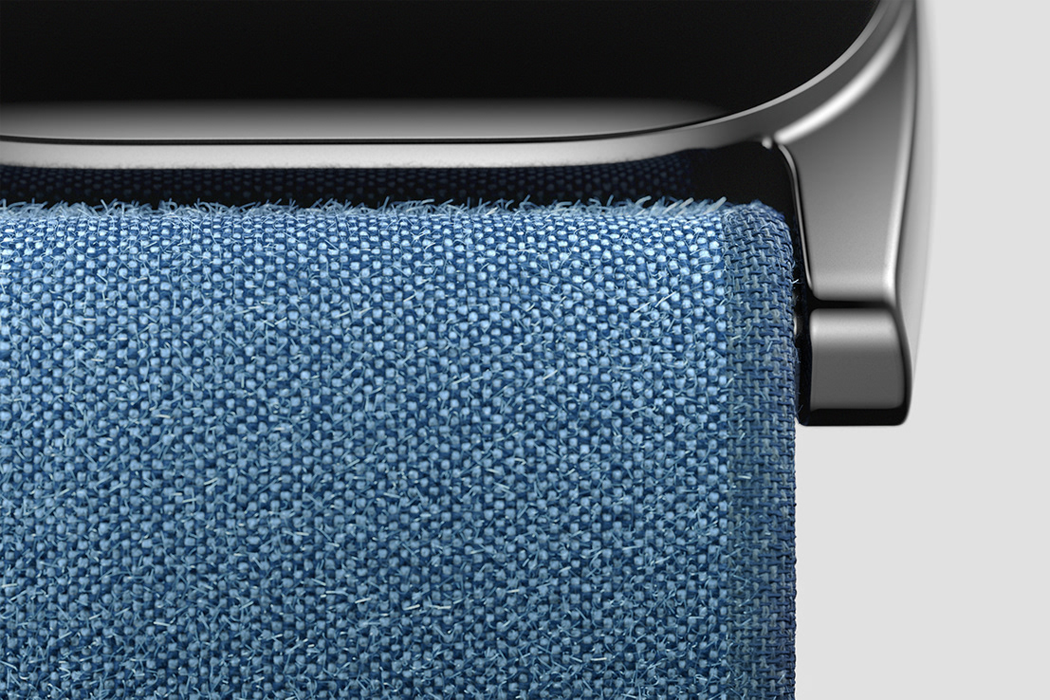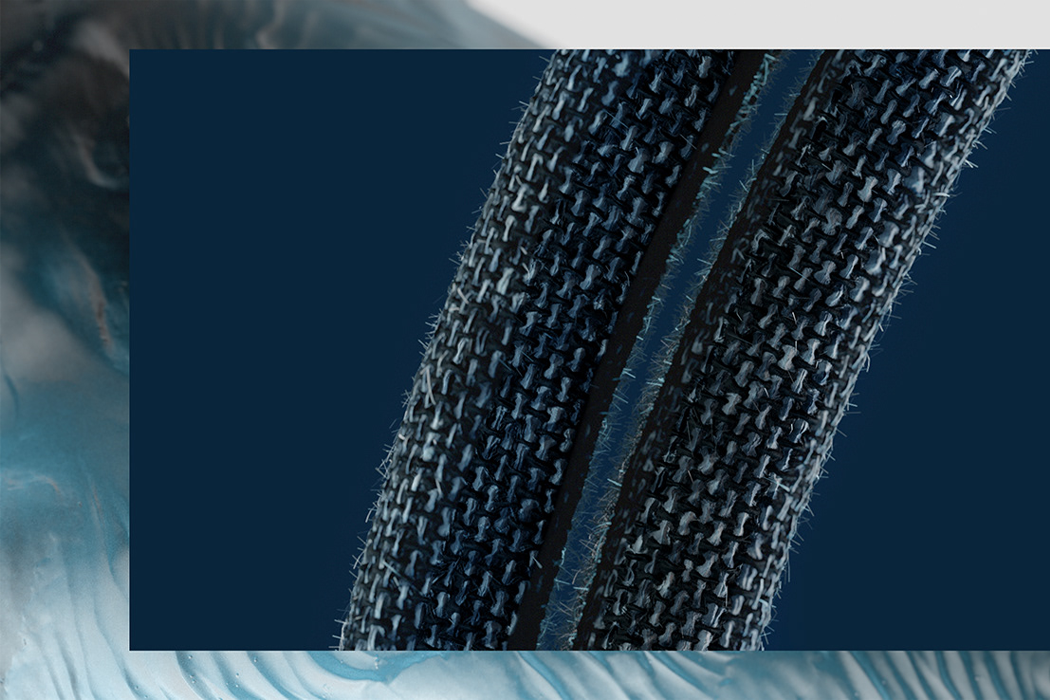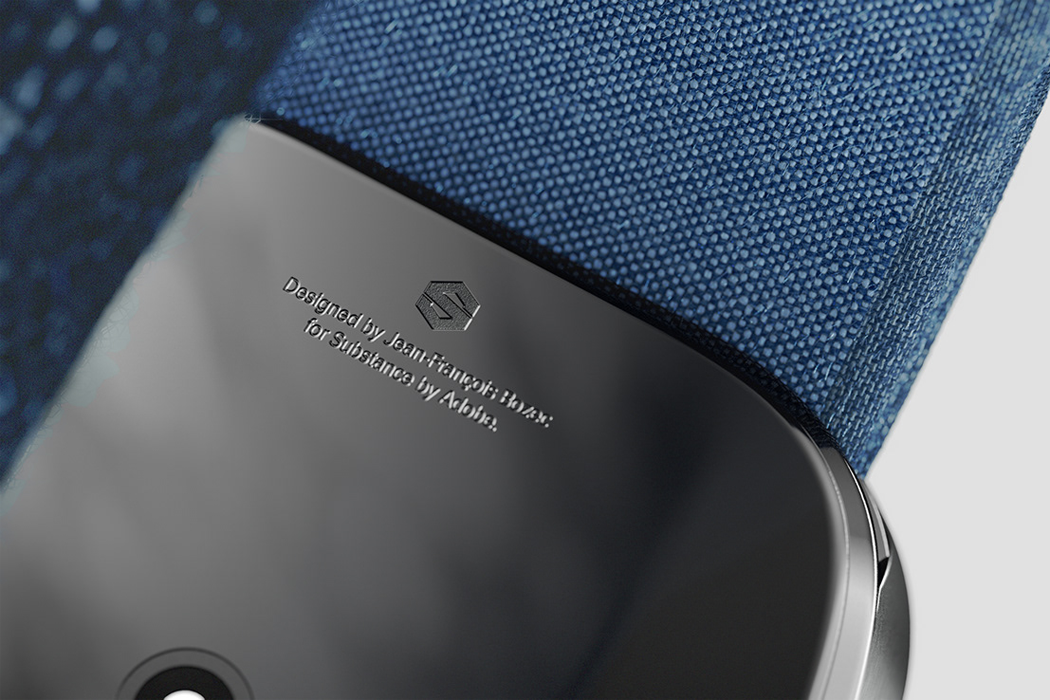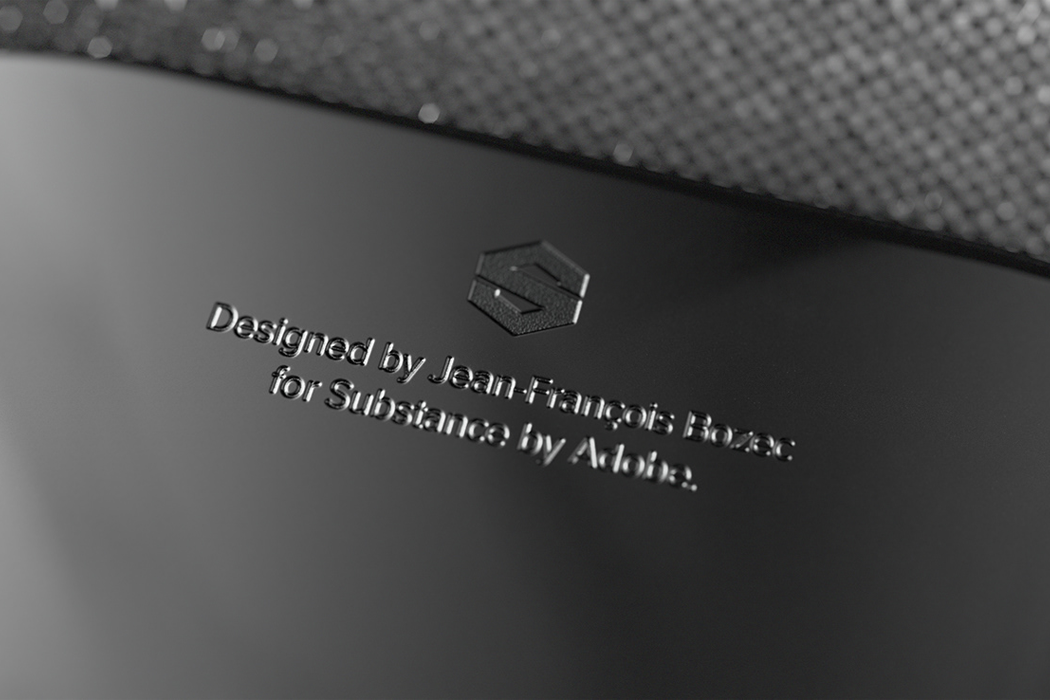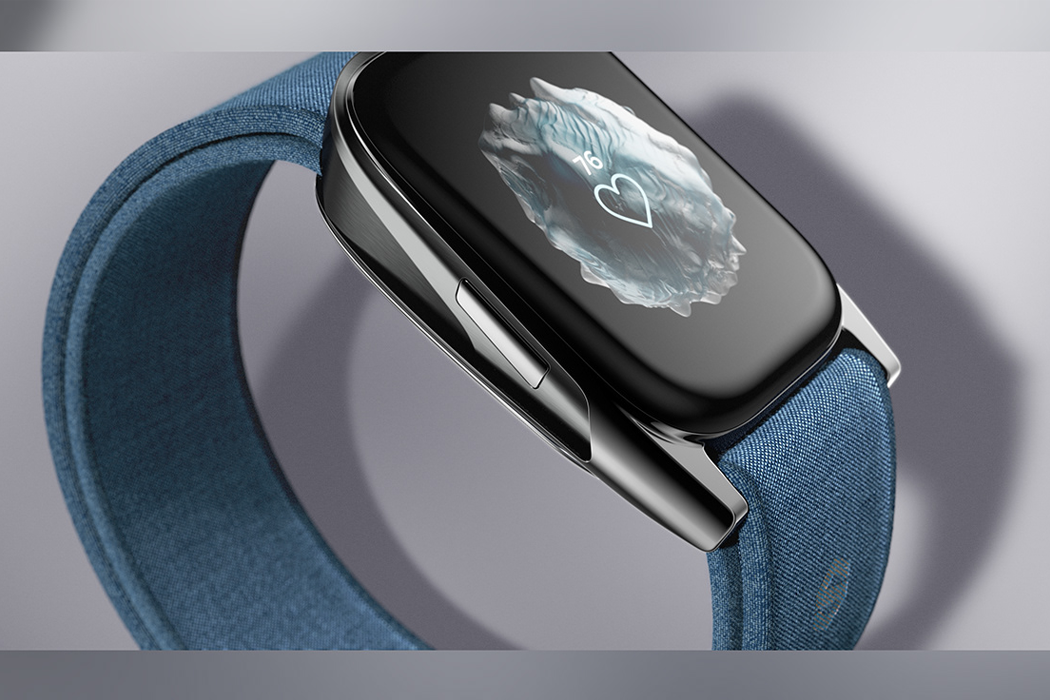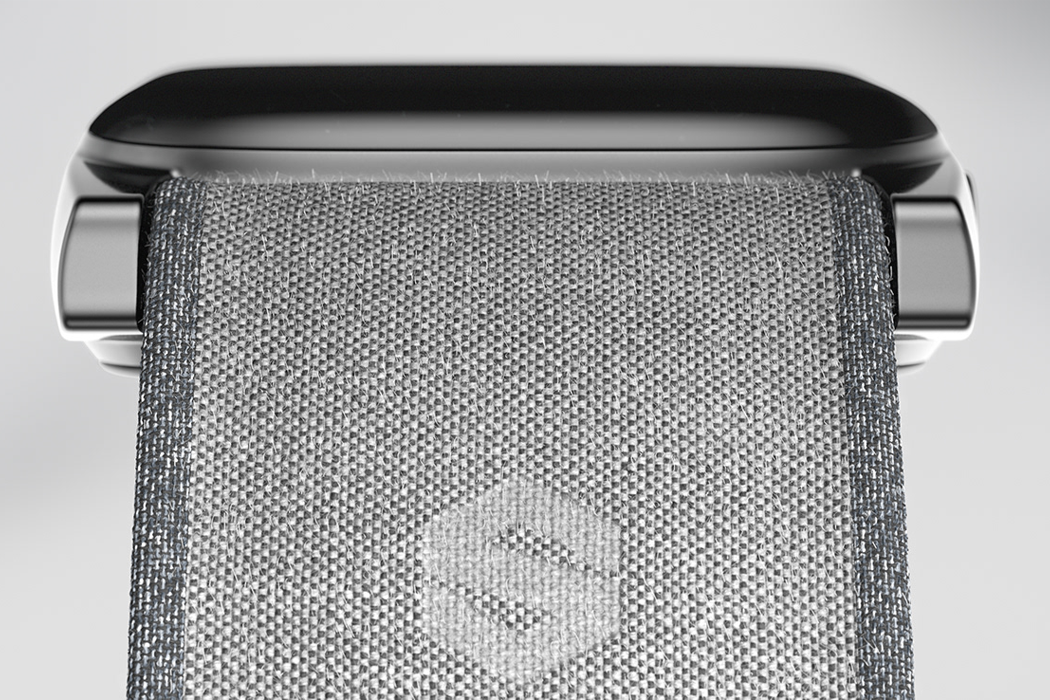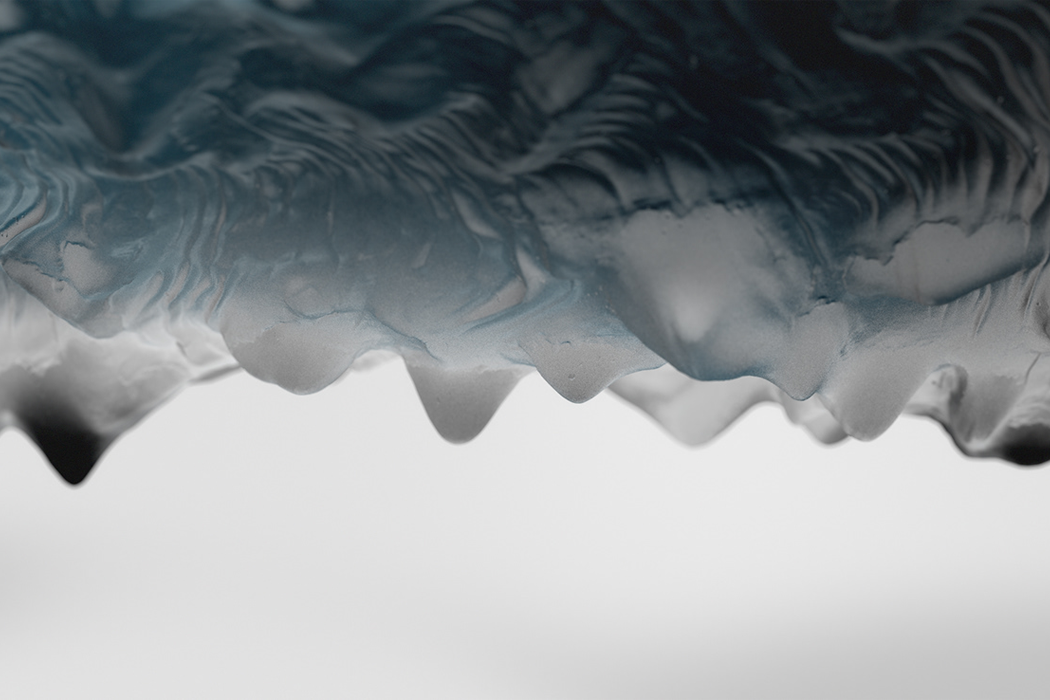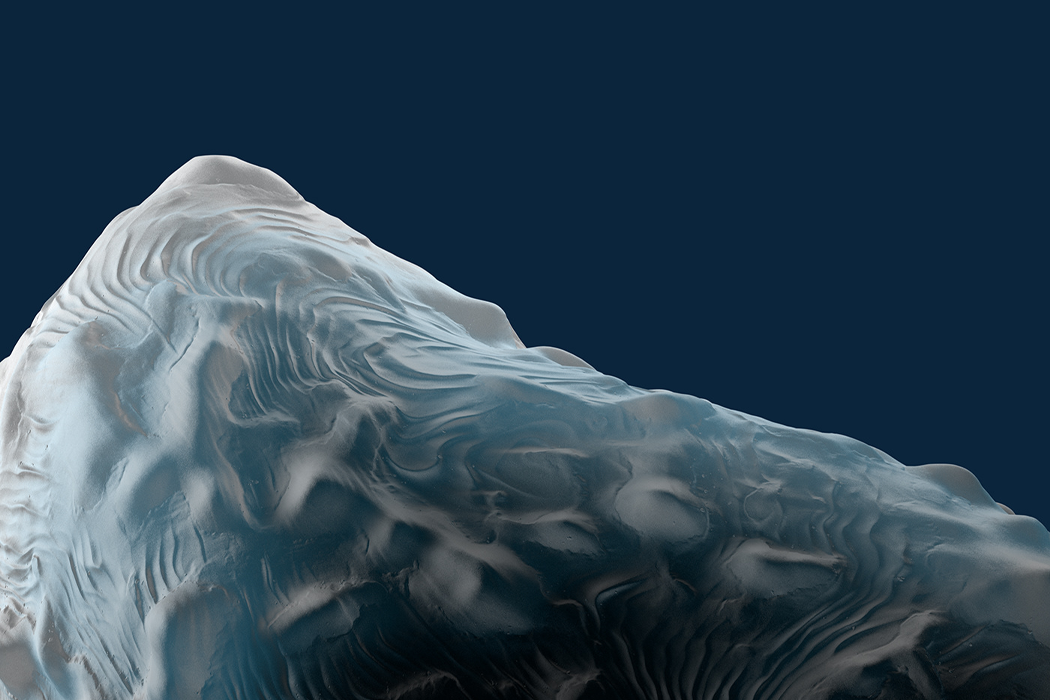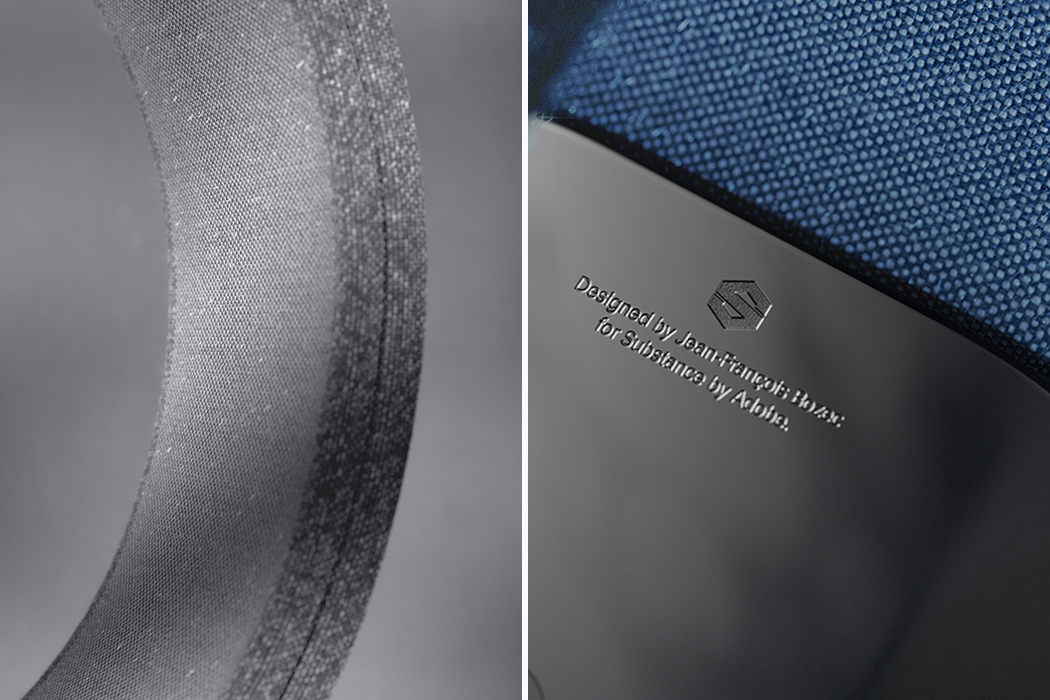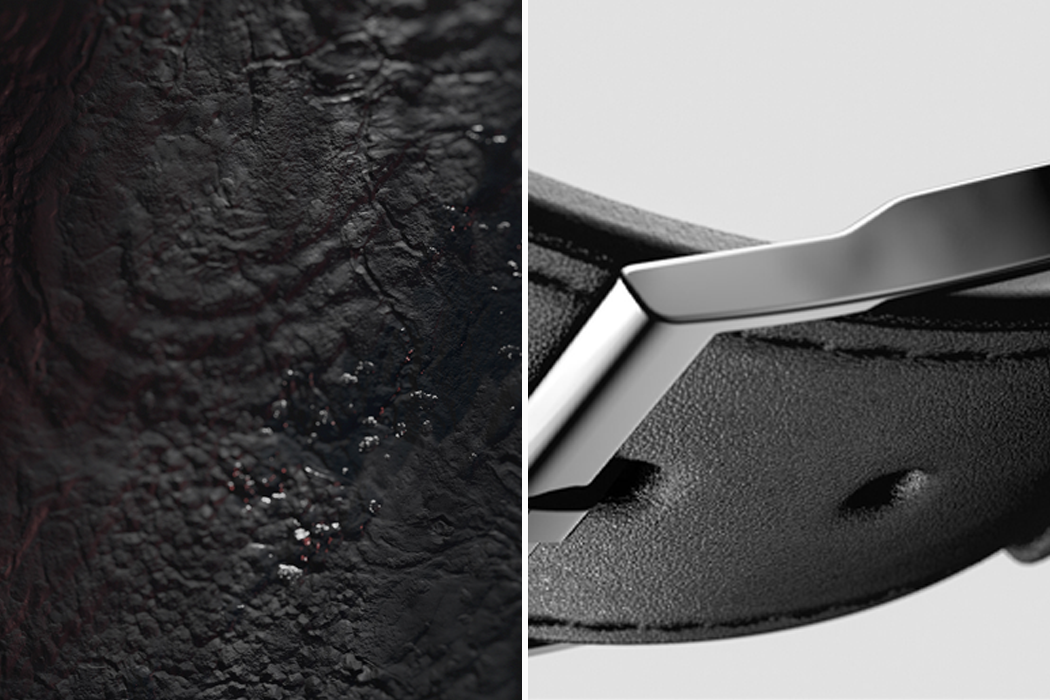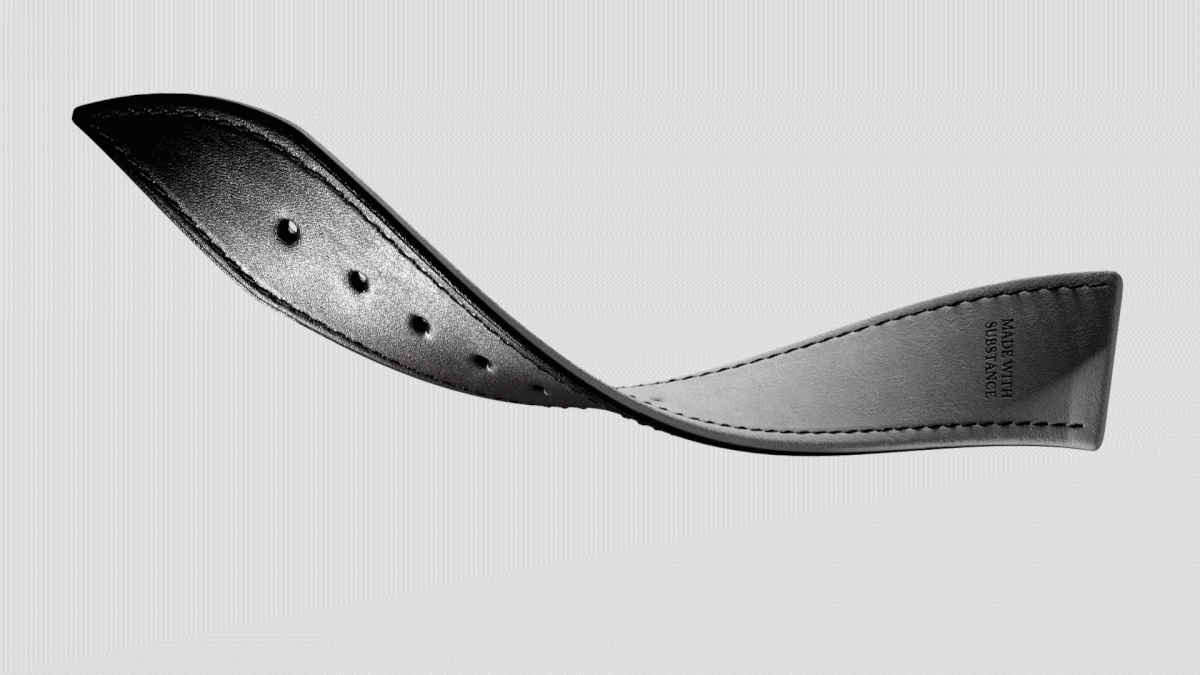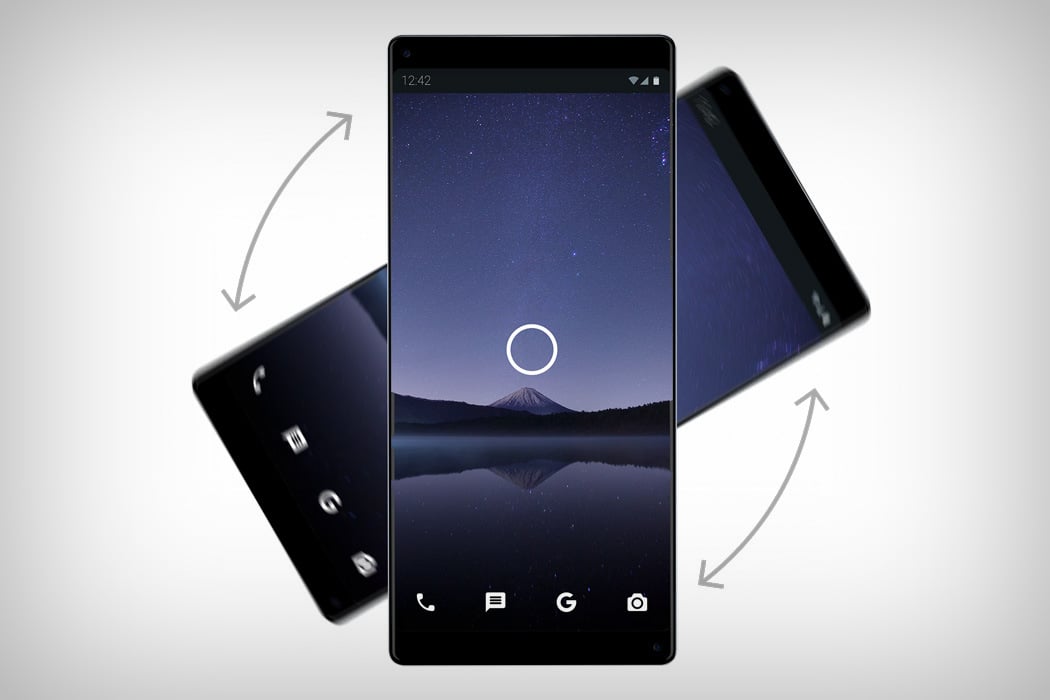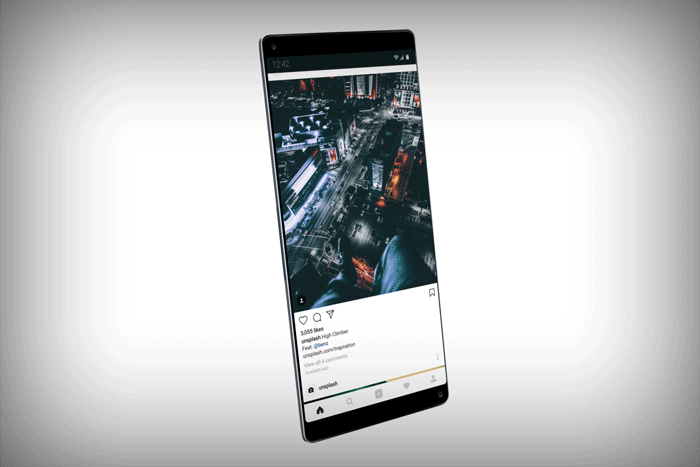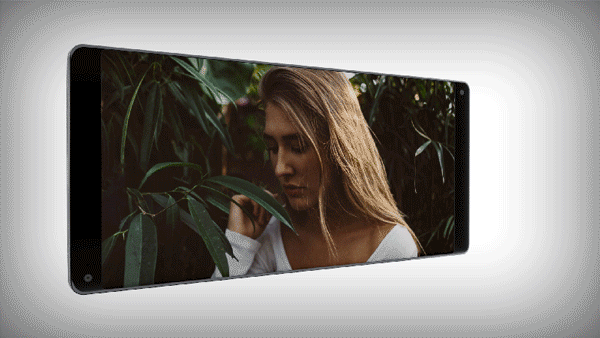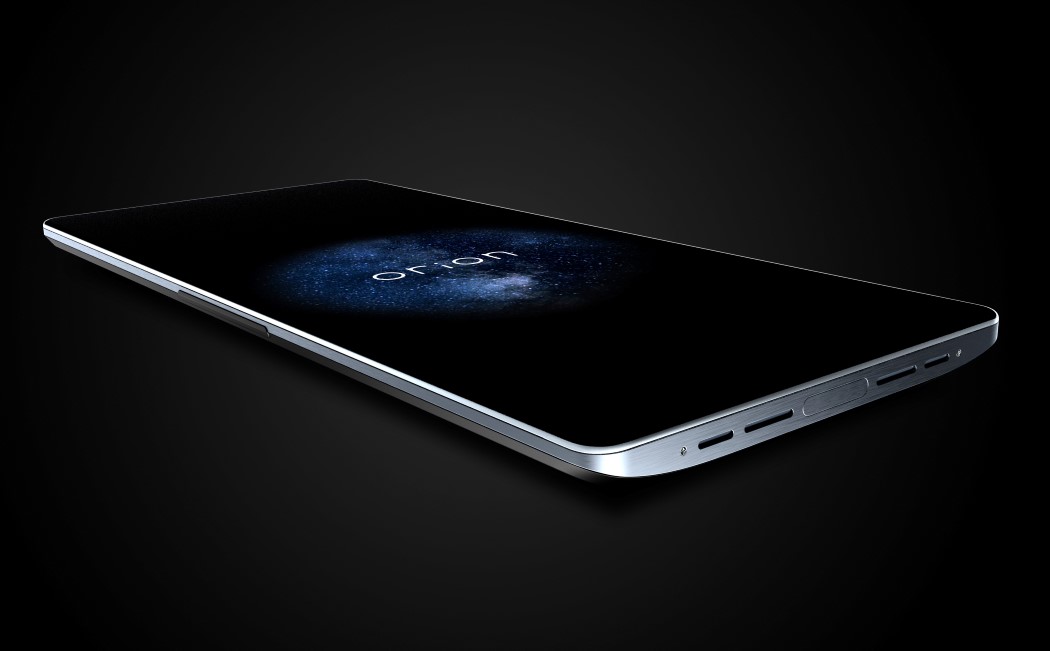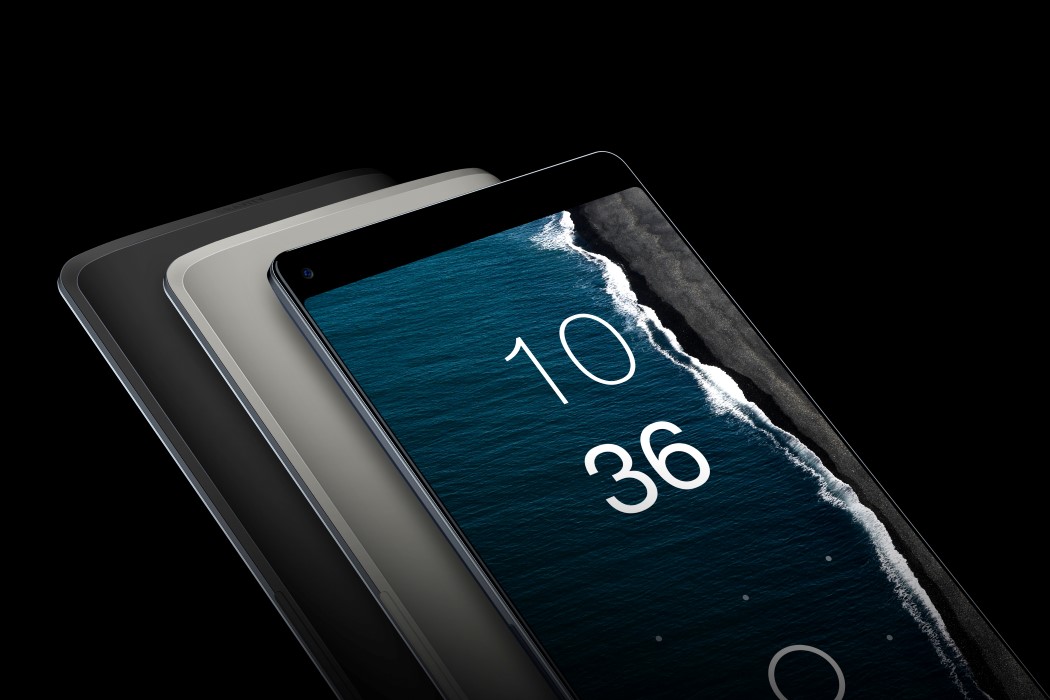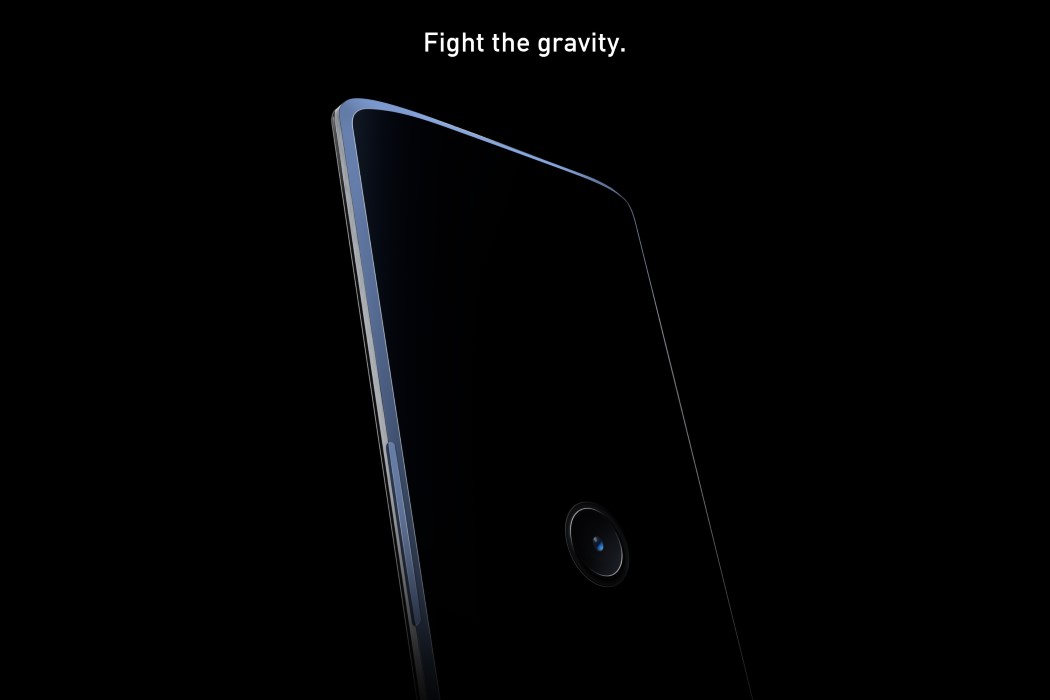The texture of wearable designs, like watches, has the ability to grab our attention before we even fully understand the designing the first place. I know I’m not the only one who can’t help but reach out to run my fingers over all the different fabrics as I pass them by in department stores. The texture of a product’s exterior is what tells our brain whether or not we’re interested in learning more about it. In collaboration with Adobe, Jean-François Bozec sourced inspiration from surfaces of raw materials like obsidian crystals, natural aluminum, and upturned leather, when designing the Obsidian Watch, his latest 3D visual concept.
The digital interface on the Obsidian Watch is raised with a gradual pitch that gives it an air of reserved elegance to match the subtly intricate textures of its watch bands. The iridescent nature of red obsidian is presented in Bozec’s design through the dual-toned case. The watch’s case creates shadowed layers and was inspired by the matte textures of aluminum and iron. When strapped onto a vermillion red, plush leather watchband – the shadows remind those who wear the watch of its obsidian origin. In addition to crystals, Bozec felt equally as inspired by snow-covered mountains and other natural elements like stones. In order to evoke the image of snow, Bozec turned to CGI to develop a fabric for the watchband that mimicked the tightly-packed nature of snow, as he explains “CGI was the ideal way to materialize the intimate emotions born of the rawness of nature. The irregularities of the geological formations inspired the creation of the leather band. In the same manner, the fabric loop band stemmed from the lightness and softness invoked by the snowy environments.”
In addition to texture, through his 3D concept, Bozec also explored technology’s role in influencing how people think and feel. Bozec goes further to say, “My goal was to transpose feelings provided by [a] substance…on a smart and non-intrusive wearable device.” With the current influx of smart technology, too often a product’s textural design is sacrificed for the sake of preserving the user’s technological experience – Bozec set out to create a compromise. While Bozec considers the Obsidian Watch project more of an “emotional visual experiment,” than a full-fledged product design concept, the truth is that it could get away with being both.
Designer: Jean-François Bozec
